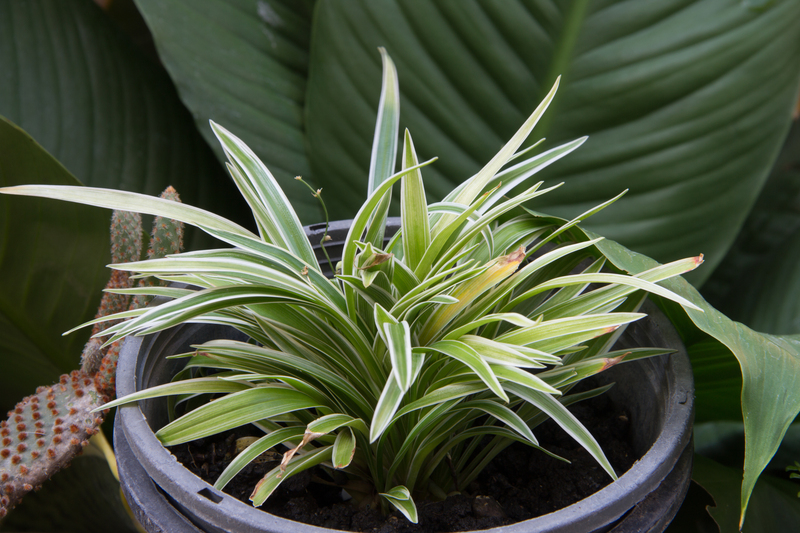Essentials of Hedge Trimming Mastery
Posted on 08/09/2025
Essentials of Hedge Trimming Mastery: A Comprehensive Guide
Hedges are more than just a border between properties -- they are the living frames of our gardens, providing privacy, structure, and beauty. Achieving perfectly manicured hedges requires more than just enthusiasm; it demands skill, knowledge, and consistent practice. In this in-depth article about the essentials of hedge trimming mastery, you'll discover actionable tips, tools of the trade, techniques, and secrets used by expert gardeners to keep hedges looking their best all year round.

Understanding the Art and Science of Hedge Trimming
Before delving into the practical aspect, let's explore why hedge trimming expertise is crucial. Well-maintained hedges don't just look neat; they also thrive, thanks to regular pruning that encourages healthy growth and deters disease. Mastering the nuances of hedge shaping and clipping will transform your outdoor space and save you time and resources in the long run.
The Role of Hedge Trimming in Garden Health
- Stimulates New Growth: Trimming hedges regularly encourages denser, bushier foliage.
- Maintains Shape: Consistent cutting ensures hedges retain their intended form, whether formal or naturalistic.
- Prevents Disease: Removing dead or crowded branches allows air and sunlight to reach the inner leaves, deterring funguses and pests.
- Enhances Curb Appeal: Immaculate hedges are an instant way to elevate your garden's aesthetic.
Types of Hedges and Their Trimming Needs
- Formal Hedges: Typically feature species like boxwood, yew, or privet; they demand precision cutting for geometric shapes.
- Informal Hedges: Often composed of flowering shrubs and require gentler, less rigorous pruning to maintain soft outlines.
- Evergreen vs. Deciduous Hedges: Evergreens may need seasonal shaping, while deciduous hedges (such as beech or hornbeam) benefit most from late winter or early spring trimming.
The Toolkit for Hedge Trimming Excellence
One secret to hedge trimming mastery is investing in the right equipment. Below are the essential tools every gardener should have, plus tips for their maintenance:
Must-Have Hedge Trimming Tools
- Hedge Shears: The classic choice for clean, manual cuts -- available in varying blade lengths for precision or speed.
- Powered Hedge Trimmers: Electric, cordless, or petrol models speed up the task, perfect for large or tall hedges.
- Loppers: Long-handled pruners that handle thicker branches beyond the open jaws of shears.
- Secateurs: Handy for detail work, cutting smaller branches and shaping awkward spots.
- Protective Equipment: Don't overlook gloves, safety goggles, and sturdy shoes for safety.
- Ladders or Platforms: For reaching high and broad hedges -- always prioritize stability.
Tool Care Tips:
- Keep blades sharp for neat cuts and to reduce plant stress.
- Regularly clean resin and sap from tools to prevent rust and disease transmission.
- Oil moving parts to ensure smooth functioning and longevity.
The Step-by-Step Process to Perfect Hedge Trimming
Success with hedge cutting and pruning hinges on timing, technique, and patience. Let's walk through the key stages of achieving a beautifully trimmed hedge:
1. Pick the Right Time for Trimming
Timing is everything in hedge trimming mastery. Overzealous pruning or ill-timed cuts can shock plants or expose them to frost or sunburn.
- Evergreens: Best trimmed late spring through late summer.
- Deciduous Hedges: Usually pruned in late winter or early spring, before new growth appears.
- Flowering Hedges: Trim after they finish blooming to prevent loss of next season's buds.
2. Prepare Your Workspace and Tools
- Clear debris and obstacles from around the hedge.
- Inspect all tools for sharpness and cleanliness.
- Lay down a tarp to collect clippings for easy disposal or composting.
3. Map Out the Hedge Shape
- Formal Hedges: Use stakes and a string line to create straight, even boundaries. This ensures geometric symmetry and prevents accidental overcutting.
- Informal Hedges: Follow the hedge's natural outline, making gentle corrections as needed.
4. Start with the Sides
- Begin trimming from the bottom up, angling the sides slightly outward (wider base/narrower top). This is called a batter, and it helps sunlight reach lower branches for even growth.
- Work steadily, stepping back often to check for levelness and straight lines.
5. Tackle the Top
- Move to the uppermost surface after the sides are shaped.
- For straight-topped hedges, use a horizontal string as a guide.
- Keep the top slightly narrower than the base for stability and light distribution.
6. Detail and Finish
- Use secateurs for snipping out-of-place shoots, damaged stems, or areas missed by large trimmers.
- Rake or pick up all cuttings from within the hedge to prevent internal rot or disease.
Techniques for Advanced Hedge Trimming Proficiency
Mastering the "Batter" Technique
One sign of professional-grade hedge cutting expertise is mastery of the 'batter' -- sloping the hedge's sides.
This promotes even light exposure and prevents the hedge from "thinning out" near the bottom. To accomplish this:
- Hold trimmer or shears at a slight outward angle.
- Consistently check both sides for symmetry as you go.
- A typical guideline: the base should be around 10-20% wider than the top.
Achieving Crisp Edges and Topiary Shapes
- For intricate designs, choose fine-toothed shears and work slowly.
- Use templates or cardboard cutouts for curves and angles.
- Continuous assessment is essential -- step back every few minutes to review your progress.
Working with Tall or Wide Hedges
- Portable scaffolds or telescopic trimmers are invaluable for reaching difficult areas safely.
- Never overstretch; safety always comes first.
Common Mistakes in Hedge Trimming and How to Avoid Them
Even seasoned gardeners can slip into bad habits that hinder hedge health or appearance. Here are some pitfalls to avoid:
- Over-pruning: Taking off too much foliage at once can weaken or kill sections of the hedge.
- Late-season trimming: Stimulates new growth that may be damaged by winter frosts.
- Cutting at the wrong angle: Results in a top-heavy shape that shades out the lower branches.
- Neglecting tool maintenance: Blunt blades tear rather than cut, increasing disease risk.
Seasonal Considerations for Expert Hedge Trimmers
Hedge care is a year-round endeavor, not just a summertime task. Mark your calendar with these reminders:
Spring
- Begin shaping after frosts and before bird nesting season starts.
- Feed hedges with slow-release fertilizer for lush summer growth.
Summer
- Perform light trimming to maintain form.
- Water during prolonged dry spells.
Autumn
- Remove straggling growth before hedges enter dormancy.
- Mulch to insulate roots as temperatures drop.
Winter
- Prune deciduous varieties while dormant.
- Avoid severe cutting during frost spells.
Hedge Trimming Safety: Looking After Yourself and Your Plants
Safety is a cornerstone of hedge management mastery. Stay vigilant with these best practices:
- Always wear protective gear, including gloves and safety glasses.
- Check for wildlife and nests before starting.
- Never use powered equipment in wet or damp conditions to avoid electric shock.
- Stretch and take breaks to prevent fatigue and repetitive strain injuries.
- Keep children and pets away from the work area.
Beyond Trimming: Ongoing Hedge Care Tips
Achieving hedge trimming excellence is part of a larger routine of attentive care. These year-round tips will keep your borders in peak condition:
- Regular Watering: Especially for new hedges or during dry seasons.
- Mulching: Reduces weeds and preserves soil moisture.
- Feed Annually: Fertilize for optimal growth and vibrant color.
- Inspect Often: Look for signs of disease, insect infestation, or stress.

Developing a Hedge Trimming Mastery Mindset
As you work towards hedge trimming mastery, remember that consistency, patience, and observation are as important as technique. View your hedges as living sculptures -- each trim presents an opportunity to refine their beauty and health.
Conclusion: Elevate Your Garden with Professional Hedge Trimming Mastery
The essentials of hedge trimming mastery involve more than just technique: they encompass timing, the right tools, plant health, and respect for the natural form of your greenery. By understanding plant varieties, utilizing sharp and clean equipment, perfecting your trimming method, and committing to ongoing care, you'll ensure your garden's hedges are not just a boundary, but a beautiful, thriving highlight of your landscape.
Remember, every well-shaped hedge is a testament to your skill and dedication as a gardener. With these essentials in mind, you're ready to transform your hedges--from overgrown barriers to masterpieces of living art.

